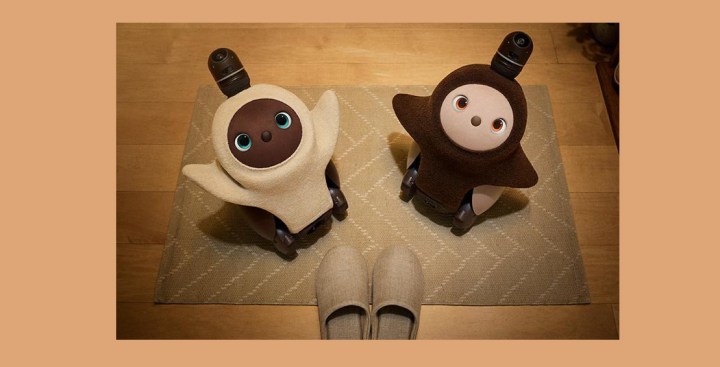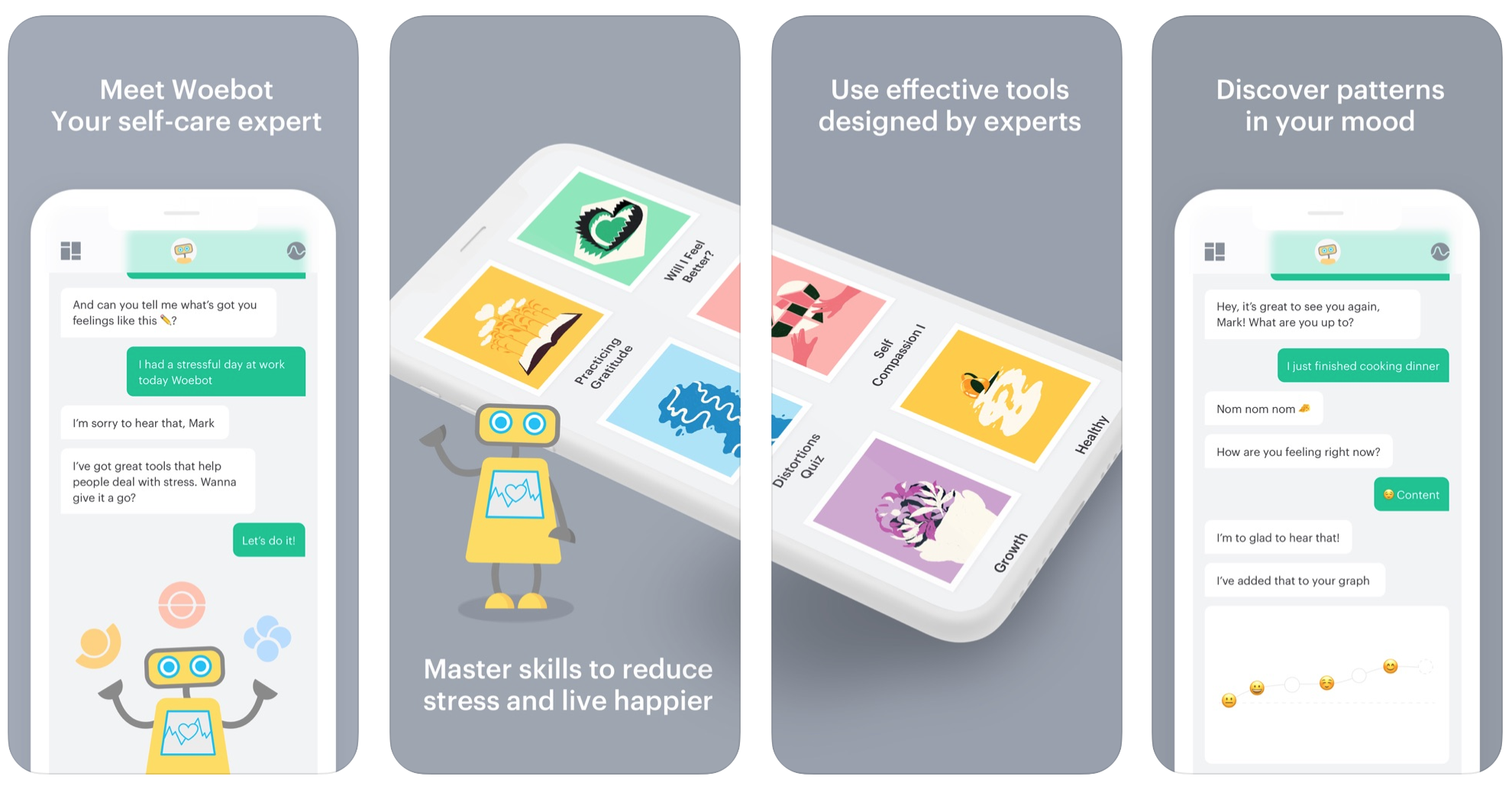MAVERICK LIFE
Touched by a bot: The rise of wellness tech

As the demand for wellness products and support continues to grow, apps, robots and the artificial intelligence that powers them are taking centre stage.
“I would [advise] everybody to embrace… to love technology because we don’t have a choice, it is going to happen. You like it, you don’t like it, technology will come [into] your life, but you can decide for which part, at what time, and more importantly at what space of time… at what rhythm. We don’t want everything to go fast. We need to upgrade our knowledge… to be able to understand what’s going on, to have control of the new service that will be [part of] everyday life,” says Ramesh Caussy, the French CEO and founder of Partnering Robotics.
Caussy made that statement at the end of his 15-minute presentation at 2017’s Global Wellness Summit, where he was presenting his company’s flagship product, the Diya One X, a robot targeted towards solving the issue of indoor air pollution in large spaces such as offices, museums and malls.

Diya One X (Image supplied)
Partnering Robots promises potential consumers that the robot’s embedded sensors “measure in real-time and accurately the air pollutants such as CO₂, temperature, relative humidity, and the concentration of fine particles, ozone and VOCs. Diya One treats the ambient air via a filtering process and removes 99.95% of air pollutants, allergens, viruses and odours.”
It is but one in an increasing array of products and services that use robotics and artificial intelligence to provide tools that promise to move us closer to that elusive state of optimum wellness, which the Merriam-Webster dictionary defines as: “The quality or state of being in good health especially as an actively sought goal.” The US National Wellness Institute breaks it down even further, into “The Six Dimensions of Wellness,” namely: physical, occupational, spiritual, intellectual, social and emotional.
At the beginning, there was… An app?
For many of us, the smartphone remains our primary contact with artificial intelligence geared toward personal wellness and there are numerous apps specifically designed to provide solutions for our wellbeing. Back in November 2019, Maverick Life spoke to Babusi Nyoni, the 32-year-old self-taught design strategist, innovator and co-founder of digital agency Triple Black.
His agency has developed several health-related apps, and apps within apps. Like Sis Joyce, an artificially intelligent chat bot that works inside Facebook’s chat app to connect users in South Africa, Nigeria, Zimbabwe, Zambia, Ghana, Kenya, Uganda and Malawi, to medical advice. Users can tell Sis Joyce, the bot their symptoms, and she’ll ask a few questions and make recommendations, or if necessary, recommend a consultation with a human doctor. Another app that Nyoni and his co-founders created and are developing with the help of Google, can potentially diagnose symptoms of Parkinson’s disease using a smartphone camera and pose estimation technology.
Beyond the prevention of physical ailments and disease, there’s also a growing selection of apps focused on mental wellbeing. In addition to popular mindfulness meditation apps such Headspace and Calm, apps such as Woebot and Wysa offer a “therapist” chatbot service. Not feeling well? Feeling anxious, stressed, depressed? The Woebot chatbot is ready to listen and offer advice. Admittedly, it can occasionally seem like a slightly better and more customised self-help book. However, the app also has various programs that can be taken over weeks or days to deal with specific mental wellbeing issues. You can also set it up to check in on you.


The Wysa app along with a selection of others, offers similar functionality, with the added advantage of getting you in touch with an actual qualified human therapist should you want one, for a fee much lower than you would pay for a face-to-face consultation. At the time of publishing, they had a 50% off special for 12 sessions that works out to R154 per session. For people struggling with addiction, there are sobriety apps. For example, the I am Sober app will assist users by offering guidance, pledges, check-ins, progress monitoring, online community, daily motivation, as well as access to professional therapists online.
The robot nurse is (almost) here
Closer to home and beyond the personal, tech start-up projects such as the Abby Health Station have been expanding their reach. The life-size Abby Health Station which is installed at some SPAR pharmacies, and used by insurance companies and hospitals, takes over some functions that might require a visit to the nurse.
According to its makers, it does 13 health checks including weight, height, blood pressure, body mass index, heart rate, body fat and body water; and it gives personalised health advice in a couple of minutes. In a world where many consumers are used to regularly monitoring their bodies through smartwatches and smartphones, it’s not exactly a stretch to get a quick check-up from a machine while popping into SPAR for a lunch snack.
The loving arms of a bot
Arguably covering both the emotional and social dimension of wellness, in January 2020 at the CES (Consumer Electronics Show), held in Las Vegas, Tokyo start-up GROOVE X unveiled the LOVOT, a cuddly interactive artificially intelligent companion robot that resembles a Teletubby, whose stated goal is to make you happy. The name LOVOT is a portmanteau of love and robot.
On their website, the manufacturers claim: “LOVOT will react to your moods, and do all it can to fill you with joy and re-energise you. It may not be living a creature, but LOVOT will warm your heart. LOVOT was born for just one reason – to be loved by you.”
Electronics giant Samsung also revealed two concept prototypes that combine robotics and artificial intelligence at CES 2020. The first is ballie, a companion robot in the shape of a small ball, just a little bigger than a tennis ball. In addition to being connected to your phone and smart home devices, ballie has a camera, ballie can recognise you and follow you around the house. Beyond behaving like a ball-shaped pet and gossiping with your other machines, ballie can also watch you as you exercise and help you work on your form.
Witness the fitness
Alongside ballie, the company also unveiled GEMS, an augmented reality-based exoskeleton you wear around your waist and thighs, along with augmented reality glasses. Once you’re locked into GEMS’ semi-virtual world, there’s a virtual trainer to assist with your exercise, using the exoskeleton to monitor your movements and guide you through your exercise session. Once the exercise is done, GEMS is able to give you feedback on your performance and tell you what to improve.
The future is a choice
Admittedly, many of these attention-grabbing personal use robots on show at platforms such as CES are still at the prototype stage, or expensive first-generation iterations that are only available in the northern hemisphere, and even then, still unaffordable for most people.
Whether or not all this access to wellness robotics and artificial intelligence will actually get us significantly closer to the seemingly ever-shifting goal-post of optimum wellness as a society remains to be seen.
The technology may be developing at a rapid pace, but for humans, our evolution is a much slower one. While that smartwatch might monitor us and regularly tell us to go for a walk or eat less salty foods, we still have to choose to follow its recommendations. DM/ML


















 Become an Insider
Become an Insider
Comments - Please login in order to comment.